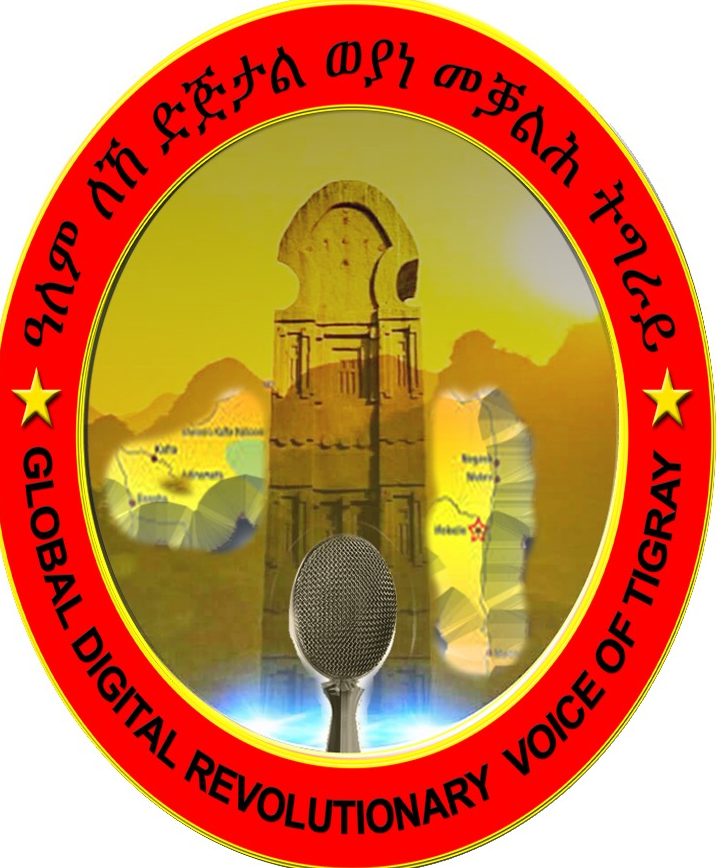Tigrai is the northern most Regional State of the Federal Democratic Republic of Ethiopia. With an estimated population of 5 million, it is located between latitudes of 12º 15’N and 14º 50’N, and longitudes of 36º 27’E and 39º59’ E. The region stretches from the Sudan border in the west and Eritrea in the north. The Ethiopian regions of Amhara and Afar in the south and east border it, respectively. From climatic and agro-ecological perspectives, Tigrai belongs to the zone of African Drylands, which is often called the Sudano-Sahelian region. This is a region that presents distinctive challenges to development.
The time to rise-up in unison to eradicate poverty out of the Tigraian landscape has come. Our victorious heroes and heroines of Woyane II, our Tegadelti, those legends who perished in the battlefields and those who made it to see victory, have built the path we can walk through. Our children must learn the extensive wealth of history and culture of their origin. This knowledge will instill high self-esteem in every one of them to be successful in their own respective lives. We should never hesitate to tell them the historical forces that forced their parents to flee the Motherland. Socio-cultural, economic, and political injustices subjected our people to a poverty trap. In effect, history matters very much for development, because where we are and where we are heading depends on what happened to our forefathers and subsequently to us. Life is a function of time. It is time that wounds; it is time that heels; and it is time that teaches lessons that we should never forget. Clear knowledge of the historical events our people went through for centuries, the dynamics of our cultural norms and values, and the social, economic, and political institutions (rules and regulations) that were imposed on us externally is the greatest impetus we have to learn from and to act on to chart the future of our people and, of course, of ourselves.
Poverty is a multidimensional deprivation of all human capabilities[. This deprivation is manifested through the horrors of: (a) susceptibility to various diseases; (b) inaccessibility of social services (e.g., law of the land, healthcare, education, information, and political freedom); (c) lack of socio-political power and knowledge to control and manage natural capital, (i.e., local ecosystems that embody natural resources, such as forests, fish, water, and wildlife); (d) absolute submission to higher social and economic classes; (e) extreme vulnerability to sudden weather and climatic changes; and (f) utter insecurity in the face of changing adverse circumstances, such as civil conflicts, wars, and famines.
TIGRAI: THE LAND OF ALL BATTLEFIELDS
Background
Frequent wars fought against external invaders in Tigrai’s soil are the major historical events that perpetuated poverty in Tigrai. “… some twenty major battles were fought in Tigrayan soil between the Battle of Adwa and the Italian invasion of 1935” [2](emphasis added). Tigraian men and women, the peasantry, had to bear the brutalities of the wars. In addition to their bravery in fighting the foreign enemies, the poor households had to provide food, water, and shelter to the peasant armies from many corners of Ethiopia, because Ethiopia did not have salaried-national army until 1941. The rules of war during those years let “.. soldiers to feed themselves at the expense of the peasants on whose lands they traversed. Indeed, pillaging (plundering, robbing) from the peasants and collecting war booty were the soldiers’ chief incentives for joining the army” (emphasis added).[3] Moreover, the Tigraian men and women provided topographic information, transportation logistics (donkeys and mules), and crucial intelligence about the frontlines. It is disgusting and bitterly annoying to observe Ethiopia’s writers and policy makers give demeaning lip-service to Tigrai’s sacrifices in protecting Ethiopia’s sovereignty and integrity. Have a look at the following historical facts:
The Selfless Patriotism of Emperor Yohannes IV
Against all Menelik’s machinations of deception, treachery, and betrayal, Emperor Yohannes IV demonstrated his patriotism, leadership skills, and military prowess against all Ethiopia’s enemies of his time. Of course, the brilliance of his trusted and famous general, Alula Aba-Nega, was imperative. Alula’s army routed well-equipped Egyptians, led by European and American mercenaries, in the following battlefields: in 1875 at Gundet; in 1876 at Guraé; in 1880 at Senhit; and in 1887 at Aylet. Again, on January 26, 1887, Ras Alula’s military prowess was put into a decisive victory at Dogali,where Italian invaders were annihilated. The Italians decried their humiliating defeat at Dogali as “The Dogali Massacre”.[4] Note that all battlefields are part of today’s State of Eritrea. Do not ask; it is a long and complicated history.
In any case, we human beings are incapable to foresee our destiny. Emperor Yohannes IV died on Mar. 12, 1889 at Metema, in today’s Amhara Killil, while defending his beloved country against the Mahdists of Mahdi Mohammed Ahmed of Sudan. The Mahdists managed to snatch the Emperor’s body from the Ethiopian heroes, who fought to the last drop of blood to defend their beloved King’s body. They (the Mahdists) beheaded him and took his head to Omdurman to be displayed as a trophy. The Sudanese Muslims, the Mahdists, revealed their primitiveness and savagery through that act of cruelty. For the King, that was an enduring evidence of his selfless patriotism. Emperor Yohannes IV gave his life for the integrity and sovereignty of Ethiopia. By doing that he instilled pride and heroism in all Ethiopian generations that followed him.
There is a legitimate-historical question the answer to which is very simple, but crucially important for Ethiopians to keep in mind: Why did those all enemies tried to subjugate Ethiopia? Just because these enemies and their collaborators were and are interested in Ethiopia’s: (a) strategic location for their purpose of geopolitical and economic sphere of influence; and (b) unique ecosystems that embed the natural wealth of: in-tact natural forests, wetlands, extensive water bodies, precious minerals, fossil fuels, etc. In addition, the Muslims hated to see Ethiopia as an island of Christianity, although Ethiopia did welcome and continues to welcome Muslims to live freely in peace and security. Thus, these historical facts should remind the modern Ethiopian generation to remain vigilant, as their forefathers did, when dealing with friends and foes alike.
Now, how do we have to immortalize the enlightening patriotism of Emperor Yohannes IV? The answer is simple. We must erect monuments in Addis Ababa and in Mekelle. The one at Mekelle, at the top of Enda-Yesus escarpment-hill, should face to the north frontier where the Emperor’s armies marched to the battlefields of: Gundet, Guraé, Senhit, Aylet, and Dogali. These are the main battlefields where the Emperor’s most trusted general, Alul Aba-Nega, routed Ethiopia’s enemies, the Egyptians and Italians. We hope that the current Ethiopian government will not remain indifferent to this historical truth. Let it be known that this generation of Tigraians will not remain complacent to all the injustices that inflicted enduring harm on Tigrai. Justice must be served.



